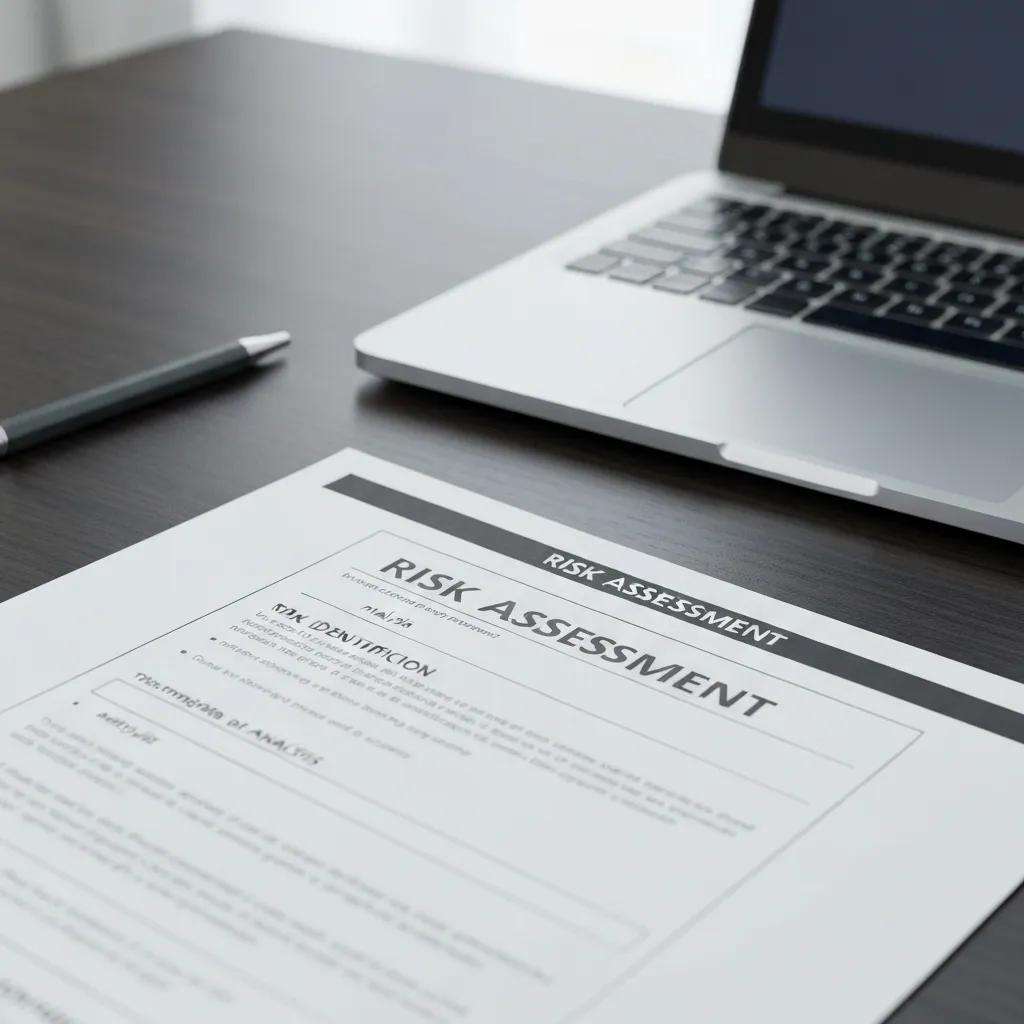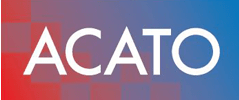Discover Essential ISO 27001 Implementation Steps for Firms

Key Steps to Implement ISO 27001 Certification Successfully: A Practical Implementation Guide
Achieving ISO 27001 certification can reduce data breach risks by up to 50%, making it a critical milestone for organizations that handle sensitive information.
Hoop.dev, 7 Practical Steps for Preventing Data Breaches with ISO 27001 (2024)
ISO 27001 and Data Breach Risk Reduction
Achieving ISO 27001 certification can potentially reduce data breach risks by up to 50%, making it a significant milestone for organizations handling sensitive information.
This highlights the importance of ISO 27001 in enhancing data security and minimizing the likelihood of data breaches.
This guide delivers a concise roadmap through the essential ISO 27001 implementation steps, from securing executive buy-in and scoping your Information Security Management System (ISMS) to conducting risk assessments, preparing documentation, and sustaining continual improvement. Readers will discover:
- Core certification phases and management alignment
- Risk assessment methodology and Annex A control selection
- Documentation requirements, performance metrics, and the Statement of Applicability
- Audit processes, management reviews, and maintenance strategies
By following this structured approach—backed by consulting expertise and ISMS management tools—you’ll streamline compliance and build a robust security posture.
What Are the Essential Steps in the ISO 27001 Certification Process?
ISO 27001 certification provides a structured framework for establishing an ISMS that safeguards confidentiality, integrity, and availability of information assets. By following a systematic process of planning, risk management, control implementation, documentation, and review, organizations can achieve certification and continuous security improvement.
The essential steps for ISO 27001 implementation include:
- Secure management commitment and resources
- Define ISMS scope and organizational context
- Conduct a thorough risk assessment and treatment planning
- Implement selected Annex A controls
- Establish information security policies and procedures
- Perform internal audits and management reviews
- Prepare for the certification audit and maintain compliance
These seven steps create a clear roadmap for ISO 27001 success and lay the foundation for detailed risk assessment and treatment planning.
How to Secure Management Commitment and Resources for ISO 27001
Securing management commitment ensures leadership support and budget allocation for ISMS initiatives.
- Align ISMS objectives with strategic business goals to highlight value.
- Present a risk-based return-on-investment analysis to justify funding.
- Assign clear roles, responsibilities, and core team members for implementation.
Building executive buy-in ensures that the ISMS scope and resource planning proceed smoothly and that subsequent phases remain well supported.
How to Define the ISMS Scope and Organizational Context
Defining the ISMS scope establishes clear boundaries for the information assets, processes, and locations covered by certification.
- Identify critical information assets and supporting infrastructure.
- Analyze internal and external issues, including regulatory requirements.
- Determine interested parties and their security expectations.
A well-defined scope aligns stakeholder expectations and informs targeted control selection, paving the way for realistic timelines and budgeting.
What Is the Typical ISO 27001 Implementation Timeline and Cost?
ISO 27001 implementation typically spans 3 to 12 months, depending on organization size and complexity, with costs ranging from USD 20,000 to USD 150,000 for consulting, training, tools, and audit fees.
Canadian Cyber Inc., The Ultimate Guide to ISO 27001 Implementation: Steps, Timeline, Benefits, Effort, and Costs (2024)
ISO 27001 Implementation Timeline and Cost
The implementation of ISO 27001 typically spans 3 to 12 months, with costs varying from USD 20,000 to USD 150,000, depending on the organization’s size and complexity.
This provides a general understanding of the time and financial resources required for ISO 27001 implementation.
Implementation efforts often align with phased planning and resourcing benchmarks:
| Organization Size | Typical Timeline (Months) | Estimated Cost (USD) |
|---|---|---|
| Small (≤ 50 employees) | 3–6 | 20,000–50,000 |
| Medium (51–250 employees) | 6–9 | 50,000–100,000 |
| Large (≥ 250 employees) | 9–12 | 100,000–150,000 |
Understanding these benchmarks helps teams plan realistic schedules and budgets for ISO 27001 certification and sets the stage for in-depth risk assessment and treatment planning.
How to Conduct an Effective ISO 27001 Risk Assessment and Treatment Plan?

ISO 27001 risk assessment is the process of identifying, analyzing, and evaluating information security risks to inform risk treatment planning and control selection. Organizations that map risks comprehensively can tailor Annex A controls precisely to their threat landscape.
What Are the Key Steps in ISO 27001 Risk Assessment Methodology?
IT Governance, ISO 27001 Risk Assessment: 7 Step Guide (2025)
ISO 27001 Risk Assessment Methodology
The risk assessment methodology involves identifying assets, threats, and vulnerabilities; analyzing risk levels; and documenting findings in a risk register.
This outlines the key steps involved in the risk assessment process, which is crucial for ISO 27001 compliance.
- Identify assets – catalog information assets and owners.
- Assess threats and vulnerabilities – evaluate potential impact and likelihood.
- Analyze risk – calculate risk level based on impact × likelihood.
- Document results – maintain a risk register with prioritized entries.
This structured evaluation feeds directly into a risk treatment plan aligned with organizational risk appetite.
How to Develop a Risk Treatment Plan and Select Annex A Controls
A risk treatment plan defines mitigation strategies—avoid, transfer, mitigate, or accept—and selects controls from Annex A that align with risk appetite and compliance needs.
- Match each high-priority risk to appropriate Annex A control(s).
- Document chosen controls, justification, and responsible parties.
- Obtain management approval and record decisions in the Statement of Applicability.
Linking risk assessment outputs to Annex A ensures that controls directly address the identified threats.
What Are ISO 27001 Annex A Controls and How Are They Implemented?
DataGuard, ISO 27001 Controls: Overview of all measures from Annex A
ISO 27001 Annex A Controls
Annex A controls are a catalog of 93 security controls across organizational, people, physical, and technological categories that mitigate identified risks.
This explains the role of Annex A controls in addressing identified risks within an ISMS.
- Organizational controls (e.g., A.5 Information security policy) define governance.
- People controls (e.g., A.7 Human resource security) manage staff responsibilities.
- Physical controls (e.g., A.11 Secure areas) protect facilities and hardware.
- Technological controls (e.g., A.13 Communications security) safeguard networks.
Implement each control through documented procedures and integrate them into daily operations to reinforce the ISMS.
How to Prepare ISO 27001 Documentation and Operationalize the ISMS?
Comprehensive documentation transforms planned ISMS components into operational processes that align staff actions with security requirements.
What Are the Required Information Security Policies and Procedures?
Information security policies and procedures are documented statements that set security expectations and operational guidelines for the ISMS.
- Information Security Policy – overarching commitment and scope.
- Access Control Procedure – user provisioning and deactivation.
- Incident Management Procedure – reporting and response workflows.
These core documents define the rules and processes that underpin consistent ISMS execution.
How to Set Information Security Objectives and Measure Performance?
Setting SMART objectives translates the ISMS policy into measurable targets and KPIs that monitor performance.
- Reduce incident response time by X%.
- Achieve 100% staff security awareness training.
- Maintain system availability ≥ 99.5%.
Regular measurement against these objectives drives continual improvement and operational accountability.
What Is the Statement of Applicability and How to Create It?
The Statement of Applicability (SoA) documents selected Annex A controls, justifies their inclusion, and explains any exclusions based on risk treatment decisions.
- List all Annex A controls.
- Mark each control as “Applicable” or “Not Applicable.”
- Provide rationale for each decision.
Finalizing the SoA with management approval ensures a clear audit trail for certification.
How to Monitor, Audit, and Continually Improve Your ISO 27001 ISMS?
Ongoing monitoring and review activities validate ISMS effectiveness and drive incremental enhancements.
What Is the ISO 27001 Internal Audit Process and Best Practices?
Secureframe, A Step-by-Step Guide to Conducting an ISO 27001 Internal Audit
ISO 27001 Internal Audit Process
Internal audits systematically evaluate ISMS conformity to planned arrangements and ISO 27001 requirements.
This emphasizes the importance of internal audits in ensuring the ISMS’s effectiveness and compliance.
- Plan audits based on risk and scope.
- Select qualified, independent auditors.
- Execute audit activities, collect evidence, and report nonconformities.
- Track corrective actions to closure.
Rigorous audits confirm control effectiveness and inform management reviews.
How to Conduct an Effective Management Review for ISO 27001?

Management reviews are periodic meetings where top management assesses ISMS performance, risk trends, and improvement opportunities.
- Prepare inputs (audit results, incident reports, KPI metrics).
- Discuss resource needs, external changes, and strategic goals.
- Record outputs (action items, policy updates, resource adjustments).
These reviews ensure leadership maintains oversight and drives continual ISMS maturation.
How to Prepare for the ISO 27001 Certification Audit and Maintain Certification?
Certification audit readiness involves completing Stage 1 document review and Stage 2 on-site assessment, ensuring evidence of implementation is available and corrective actions are closed.
- Compile documentary evidence (policies, registers, SoA).
- Train key personnel on audit roles and interviews.
- Schedule surveillance audits to demonstrate ongoing compliance.
Proactive preparation and scheduled monitoring maintain certification validity over time.
What Are Common Challenges and Best Practices for ISO 27001 Implementation?
Navigating obstacles effectively and adopting proven practices accelerates successful certification.
What Are the Typical ISO 27001 Implementation Challenges and How to Overcome Them?
Common challenges include limited resources, documentation complexity, and change resistance, which can be overcome through automation, phased rollouts, and stakeholder engagement.
- Prioritize high-impact controls to manage resource constraints.
- Use policy templates and ISMS software to simplify documentation.
- Conduct awareness sessions to foster a security culture.
Addressing these areas early keeps implementation on track.
What Are Best Practices for Successful ISO 27001 Implementation?
Best practices include adopting an iterative Plan-Do-Check-Act cycle, leveraging compliance automation tools, and fostering a security culture across all departments.
- Integrate ISMS tasks into existing workflows to minimize disruption.
- Automate evidence collection and reporting for efficiency.
- Engage all levels of staff through ongoing training and communication.
These strategies enhance effectiveness and reduce time to certification.
How Can Small Businesses Achieve ISO 27001 Certification Cost-Effectively?
Small businesses can certify cost-effectively by focusing scope narrowly, using modular templates, and leveraging scalable cloud-based ISMS platforms.
- Limit asset and process scope to core business functions.
- Adopt free or low-cost policy and procedure templates.
- Choose flexible audit providers that offer SME packages.
By tailoring scope and resources, smaller organizations can achieve ISO 27001 certification without overextending budgets.
Implementing ISO 27001 systematically empowers organizations to manage information security effectively and gain stakeholder trust. By following these essential steps and best practices, teams can streamline certification and maintain compliance. Organizations are encouraged to begin with risk assessment and leverage available templates to accelerate progress. Adopting a cyclical improvement approach ensures the ISMS evolves alongside emerging threats and business needs.
Frequently Asked Questions
What are the benefits of achieving ISO 27001 certification beyond data breach risk reduction?
Achieving ISO 27001 certification offers numerous benefits beyond reducing data breach risks. It enhances an organization’s reputation by demonstrating a commitment to information security, which can improve customer trust and satisfaction. Additionally, it can lead to operational efficiencies through standardized processes and improved risk management. Organizations may also experience better compliance with legal and regulatory requirements, potentially avoiding fines and penalties. Furthermore, ISO 27001 certification can provide a competitive advantage in the marketplace, as it signals to clients and partners that the organization prioritizes data protection.
How often should an organization conduct internal audits for ISO 27001 compliance?
Organizations should conduct internal audits for ISO 27001 compliance at least annually, although more frequent audits may be beneficial depending on the organization’s size, complexity, and risk profile. Regular internal audits help ensure that the Information Security Management System (ISMS) remains effective and compliant with ISO 27001 requirements. They also provide opportunities to identify areas for improvement and verify that corrective actions from previous audits have been implemented. Some organizations may choose to conduct audits quarterly or biannually to maintain a proactive approach to information security management.
What role does employee training play in ISO 27001 implementation?
Employee training is crucial in ISO 27001 implementation as it ensures that all staff members understand their roles and responsibilities regarding information security. Training helps cultivate a security-aware culture within the organization, reducing the likelihood of human error, which is a common cause of data breaches. It also ensures that employees are familiar with the policies, procedures, and controls established under the ISMS. Regular training sessions can reinforce security practices and keep staff updated on new threats and compliance requirements, ultimately contributing to the overall effectiveness of the ISMS.
What is the significance of the Statement of Applicability (SoA) in ISO 27001?
The Statement of Applicability (SoA) is a critical document in the ISO 27001 framework as it outlines which Annex A controls are applicable to the organization and provides justification for their inclusion or exclusion. The SoA serves as a reference point for auditors and stakeholders, demonstrating the organization’s commitment to addressing identified risks. It also helps ensure that the selected controls align with the organization’s risk treatment plan and overall information security objectives. Regularly updating the SoA is essential to reflect changes in the risk landscape and organizational context.
How can organizations ensure continual improvement of their ISMS after certification?
Organizations can ensure continual improvement of their ISMS after certification by adopting a systematic approach to monitoring and reviewing their information security practices. This includes conducting regular internal audits, management reviews, and risk assessments to identify areas for enhancement. Organizations should also establish key performance indicators (KPIs) to measure the effectiveness of their ISMS and track progress over time. Encouraging feedback from employees and stakeholders can provide valuable insights for improvement. Additionally, staying informed about emerging threats and industry best practices will help organizations adapt their ISMS to evolving security challenges.
What are the common pitfalls to avoid during ISO 27001 implementation?
Common pitfalls during ISO 27001 implementation include inadequate management support, insufficient employee training, and poorly defined ISMS scope. Without strong leadership commitment, securing necessary resources and fostering a culture of security can be challenging. Additionally, neglecting to train staff on their roles within the ISMS can lead to compliance gaps and increased risk. Organizations should also avoid overly broad scopes that can complicate implementation and dilute focus. Instead, a well-defined scope aligned with business objectives will facilitate a more effective and manageable implementation process.
Conclusion
Implementing ISO 27001 certification significantly enhances your organization’s information security posture, reducing data breach risks and fostering stakeholder trust. By following the structured steps outlined in this guide, you can streamline compliance and ensure continuous improvement of your Information Security Management System (ISMS). Take the first step towards certification by assessing your current security practices and leveraging available resources. Start your journey to robust data protection today.
